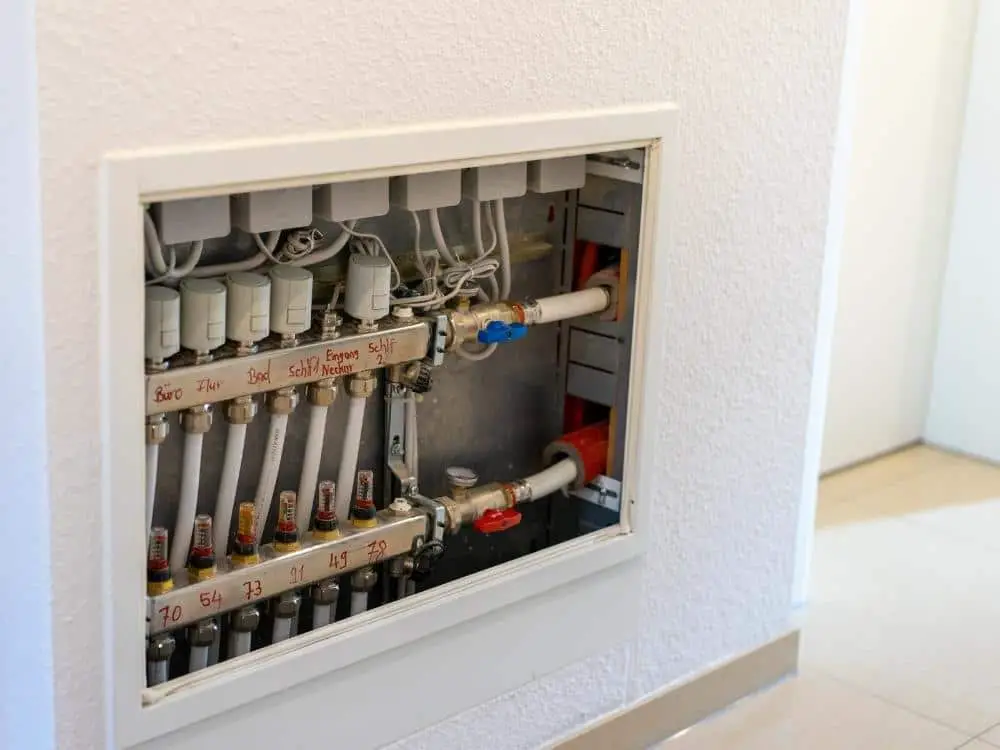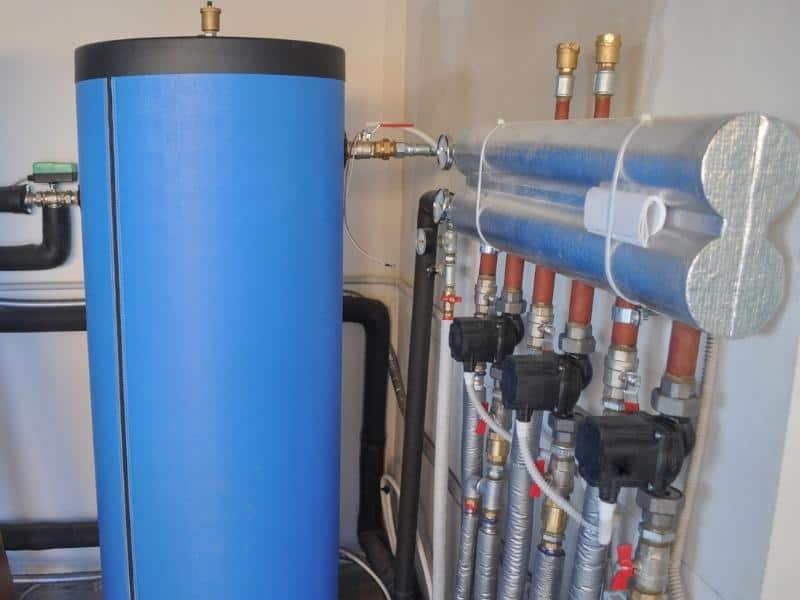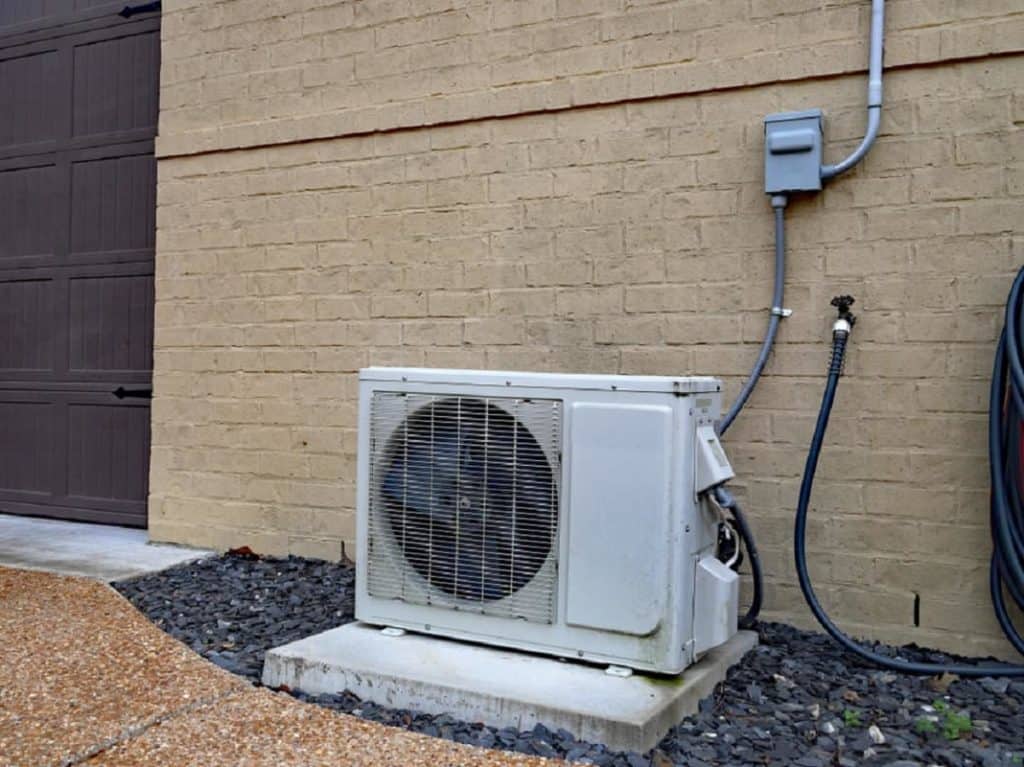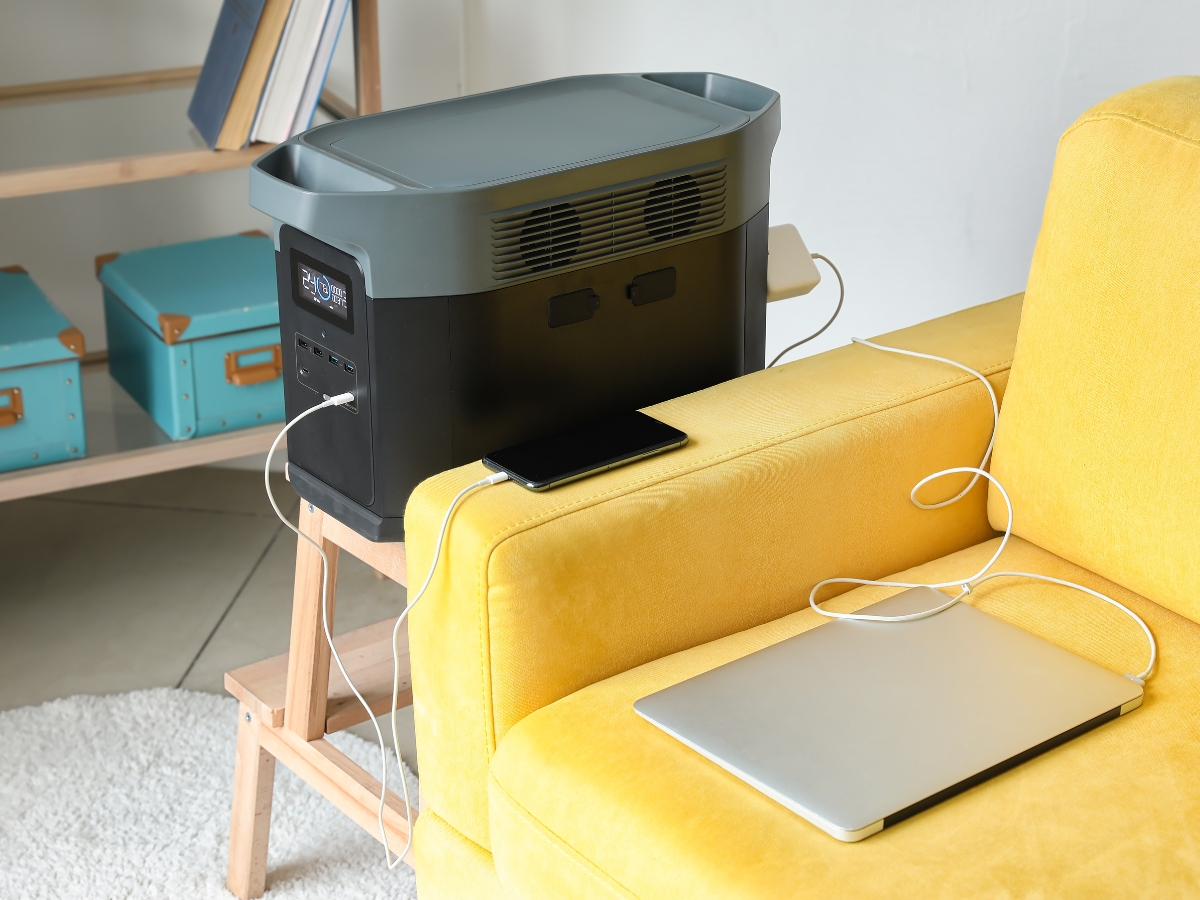Heat or kinetic energy always wants to move from an area of high kinetic energy to an area of low kinetic energy. The heat of kinetic energy is always looking to dissipate. The Second Law of Thermodynamics governs the way in which concentrated energy or heat will naturally tend to become dissipated or diluted across a great volume of atoms or molecules.
Heat pumping occurs when a hot object is brought into contact with a cold object. The heat will flow from the hot object to the cold object and never spontaneously reverse. The heat between the two objects will even out until they are the same. The heat was pumped from the hot to the cold object.
We will look at the following aspects of heat pumps:
- Heat pumps in the natural world
- The heat pump mechanism
- How do heat pumps generate cooling
- How do heat pumps generate heating
- What are the most common refrigerants
This principle of heat pumping follows the second law of Thermodynamics and has been used to design cold rooms, refrigerators, air conditioners, and heat pumps for the heating and cooling of water and air. Let’s look at how heat pumps operate at an atomic and molecular level.

The Body Is A Heat Pump
Our skin is the biggest organ of the human body, and it helps us to regulate our body temperature with the use of a number of systems:
- Blood circulation system
- Sweat through the skin
The function of the blood in our circulatory system is to bring oxygen-poor blood to the heart to be oxygenated via the function of the lungs and heart and sending the cooled oxygen-rich blood to the cells in the organs and extremities of our bodies to deliver the oxygen and absorb carbon monoxide and heat.
The blood is then circulated back to the lungs via the heart’s pumping action to be oxygenated and cooled once again. If our heart and lungs do not perform their functions of pumping, oxygenating, and cooling the blood, the blood will start to break down, and we will have a heart attack or die of oxygen starvation.
The blood vessels close to the skin and the surface of the lungs will radiate its heat towards the cooler outside air. Our skin helps by generating sweat that will evaporate from our skin and help to cool the skin and the blood. If we become dehydrated, our skin cannot produce sufficient sweat to help to cool the skin and the blood.
The second law of thermodynamics governs the transmission of heat energy away from a concentrated area towards a dispersed cooler area. The same principle has been used to design heat pumps for air conditioners and other heating and cooling appliances.
How Does A Heat Pump Work?
In the same way that the blood is cooled by the evaporation of sweat from your body’s skin and the heart pumps the cooled blood back around the body to cool the brain and other vital organs, a heat pump simulates this principle in cooling air or water.
A heat pump system consists of a high-pressure coil and a low-pressure coil connected via a pump on one end and an expansion valve on the other end. The “blood” in a heat pump is a refrigerant such as Freon (Chlorofluorocarbon or CFC). Modern CFCs have been developed to be more efficient as heat exchangers and less environmentally damaging.
Due to the damage that CFC was causing to the Ozone layer in the earth’s atmosphere, refrigerants have been developed that are more effective at absorbing and transferring heat and are less detrimental to the ozone in the Stratosphere.
The cool gas absorbs the heat (vibrational kinetic energy) from the surrounding air on the low-pressure half of the heat.
The heated gas is pumped into the high-pressure condenser loop, where the heat is dissipated to the air with the help of a blower fan. The energy used by the compressor and the blower fan to force the gas back into a liquid is the input energy.
The compressed gas dispels the heat and condenses to a liquid under pressure. The pressurized liquid refrigerant is passed through an expansion valve. The pressure release allows the liquid to expand to a cold gas passed into the evaporator coil. The heat surrounding the evaporator coil is absorbed by the cold gas and pumped back to the compressor to repeat the cycle.
The energy absorbed by the gas is the output energy of the system. The efficiency of a heat pump is calculated by dividing the output energy (amount of heating or cooling) by the input energy (for compressor and fan motor), which yields the coefficient of performance.
If the amount of cooling or heating generated is equivalent to 2 kW worth of work and the amount of work needed to run the compressor and cooling fan is 1 kW, then the heat pump has a COP equal to 2. Heat pumps are considered efficient if they have a COP between 2.5 and 3.5. The theoretical maximum COP is 4.5.

How Does A Heat Pump Work In A Refrigerator?
The heat pump consists of a low-pressure evaporator half where the cold gas absorbs heat before it is pumped by the compressor back into the high-pressure half of the system where the hot gas is condensed back into a liquid, and the heat is dissipated by the copper or aluminum condenser pipes and blower fan.
To create cooling, the evaporator tubing is inside the fridge to absorb the heat and pump the heat out of the fridge to the condenser coil on the outside of the fridge. The condenser coil is much larger in surface area than the evaporator coil. The heat from the condenser coil is dissipated to the air around the coil.
If the condenser coil becomes clogged with dust or does not have good airflow around it, the ability of the system to create cooling is impeded. The compressor will run more often to increase the system’s cooling ability. Heat is pumped out of the inside of the fridge to the outside.
The absence of high kinetic energy on the fridge’s inside results in the cold. Cold air is heavier than warm air as it contains more moisture. When the fridge door is opened, you can feel the cold air falling out of the fridge.
For this reason, chest fridges and freezers are more efficient in staying cold.

How Does A Heat Pump Work To Heat And Cool The House?
Heat pump systems have been designed to heat homes during the winter months or cool homes during the summer months. During the cold winter months, the system is programmed to pump heat from the outside air to inside the house.
It sounds counterintuitive that you can extract heat from the cold winter air and use it to warm the inside of the house. The outside coil acts as the evaporator extracting kinetic energy from the outside air via thermal conductivity with the copper or aluminum metal of the coil.
The heat is absorbed by the cold gas, increasing its volume and the kinetic energy of the bonds within the refrigerant molecules. The compressor pump will draw the heated gas into the high-pressure condenser loop inside the house. As the compressor forces the gas back into a liquid, the heat from the gas will be transferred to the metallic coil of the condenser.
Heat Coils
A blower fan will move cool air over the heated coils and transfer the heated air into the house via ducting. The liquid will cool inside the condenser and flow back to the expansion valve leading to the evaporator unit outside the house, where the cycle of energy absorption expansion of the heater refrigerant gas is repeated.
During winter, a common problem is for the cold, moist air to condense and freeze on the external evaporator unit. The buildup of frost and ice makes the evaporator inefficient as the ice acts as an insulator that prevents heat extraction to the gas in the extractor.
The system is programmed to run in reverse to create a defrost cycle to overcome this problem. During the defrost cycle, heat from inside the house is extracted and pumped to the evaporator to melt the ice. The system only needs to run this defrost cycle occasionally to keep it working optimally.
In the summer months, the system will switch over to cool the inside of the house by extracting heat from inside the house and expelling it via the external evaporator. In essence, the defrost cycle of winter becomes the default cooling cycle for summer.
By changing the temperature settings on the thermostat, the system will run in a cooling or heating cycle.
What Are The Most Commonly Used Refrigerants?
Freon is the most commonly used refrigerant in such domestic heat pump applications. The Freon boils at minus twenty-two Fahrenheit (minus thirty degrees Celsius). As long as the outside temperature is higher than the boiling point of Freon, the system will be able to extract heat.
Here is a list of refrigerants and their corresponding boiling points in degrees Fahrenheit:
- Ammonia -28
- R-404A -51.7
- R-410A -61.8
- Oxygen -297
- Nitrogen – 320
- CO2 – 109
- Hydrogen – 423
- Helium – 452
Absolute zero is the lowest theoretical temperature. It corresponds to −273.15 °C on the Celsius temperature scale and −459.67 °F on the Fahrenheit temperature scale. In theory, any of these refrigerant compounds can be used in heat pumps.
Many RVs are still fitted with simple Ammonia filled systems. These fridges do not even require a compressor and can be powered by candle flame.
The Ammonia will condense at normal ambient temperatures and be fed back into the evaporator by the effect of gravity of the liquid Ammonia.
What Is The Science Of Cryogenic Freezing?
Per definition, cold is the absence of heat. Heat is measured by temperature, which gives us the degree of kinetic energy left in a body. For a human body to be cryogenically frozen, it must be flash-frozen to below minus twenty degrees Fahrenheit instantaneously.
Liquid Nitrogen is at minus three hundred and twenty degrees Fahrenheit and is most commonly used to cryogenically freeze organic matter for preservation. Many physical properties of materials change as they approach absolute zero temperature.
Super conduction of electricity has been developed at cryogenic temperatures. As the vibrations of molecular bonds become less, the ability of charged particles to move through the lattice of solid material improves to the point where superconductivity is achieved.
Heat Pumping At Molecular Level With Global Effect
Consider the nitrogen atoms in liquid Nitrogen. The liquid Nitrogen must be at a temperature below minus three hundred and twenty degrees Fahrenheit to remain a liquid. The nitrogen atoms at the surface of the liquid will absorb heat from the ambient air causing the top layer of nitrogen liquid to boil.
The supercooled gas consisting of Nitrogen and water vapor will seem to boil over the edge of the thermos flask containing the liquid Nitrogen. Heat is pumped out of the hot atmosphere and into the cold Nitrogen. This is the same principle used on closed-loop heat pump systems.
A liquid is boiled by the energy of the surrounding air molecules. The cold liquid makes the copper atoms in the evaporator coil vibrate less. The slow-moving atoms of the copper coil are bombarded by the high-energy vibrations of the air molecules. The vibrational energy of the air molecules is transferred to the copper atoms and from there to the nitrogen liquid.
Transfer Energy
The nitrogen liquid absorbs the energy until it has heated up enough to boil and turn from a liquid to a gas. The vibrational energy of the air molecules has been pumped into the nitrogen gas, leaving the temperature of the air lower than before. The reduction in vibrational energy in the air molecules has caused them to cool down.
Heat pump systems surround us. Some exist at an atomic level and assist us in keeping our beer cold. Other heat pumps are organic like our skins and help us cool our bodies down and regulate our blood circulation.
The vast oceans absorb the heat from the sun and produce enormous amounts of fresh water to feed our rivers and mountaintops. The tropical rain forest absorbs huge amounts of carbon dioxide and converts it into water, oxygen and the nutrients needed for plants to grow.
All of these natural processes use the conversion of energy from one form to another. We have adapted these models from Mother Nature to work for us and make our lives on earth easier.
References:



